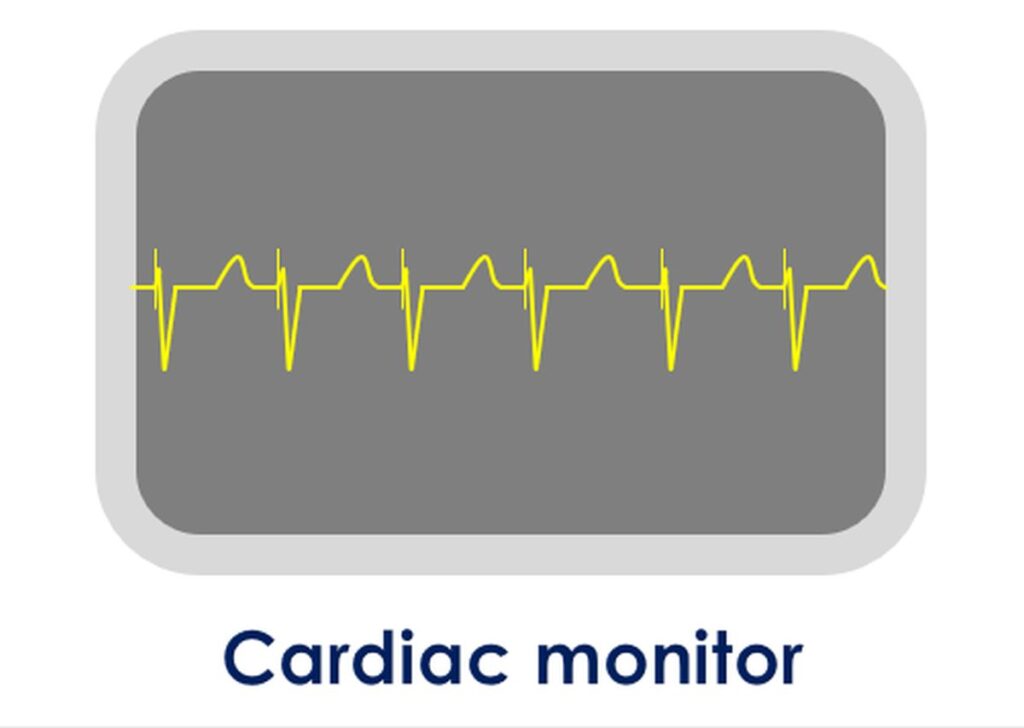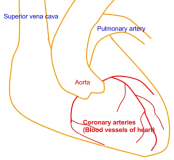What is temporary pacing?
What is temporary pacing?
Pacemaker is an electronic device used to give regular electrical signals to the heart when the heart beat has slowed down unduly due to some disease. Normally, the heart beats are regulated by the natural pacemaker of the heart known as sinus node, which is situated in the upper right corner of the right atrium. Right atrium is the upper right chamber of the heart.
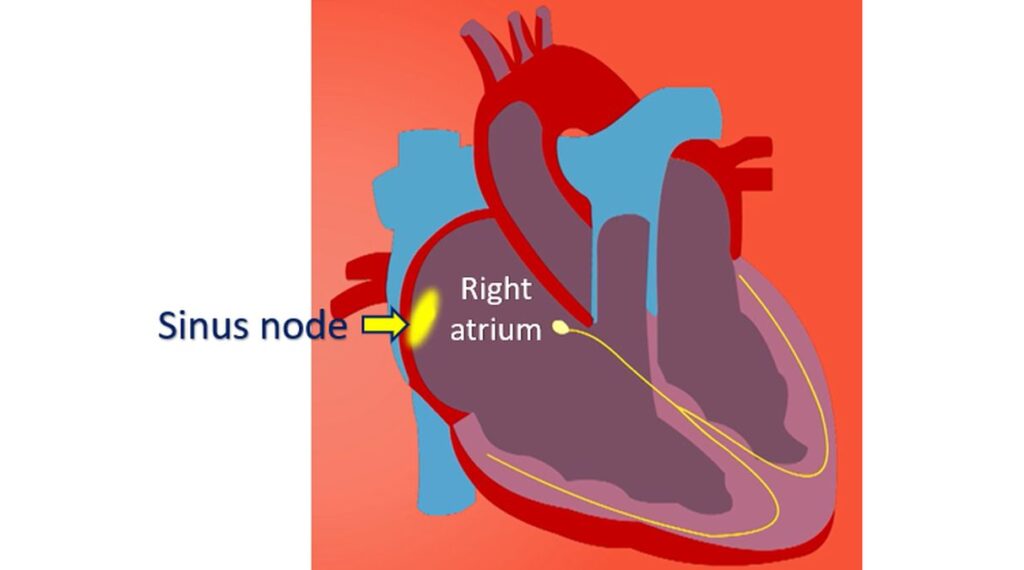
Temporary pacing is done using an external device known as temporary pacemaker. It is an electronic device which can give regular electrical pulses to the heart. It is placed outside the body and connected to the heart with electrical leads introduced through the veins of the neck or groin through a small hole in the skin. The diagram shows the temporary pacemaker and and lead reaching the right ventricle, the right lower chamber. The X-ray fluoroscopy image shows the temporary pacing lead tip in the right ventricle.
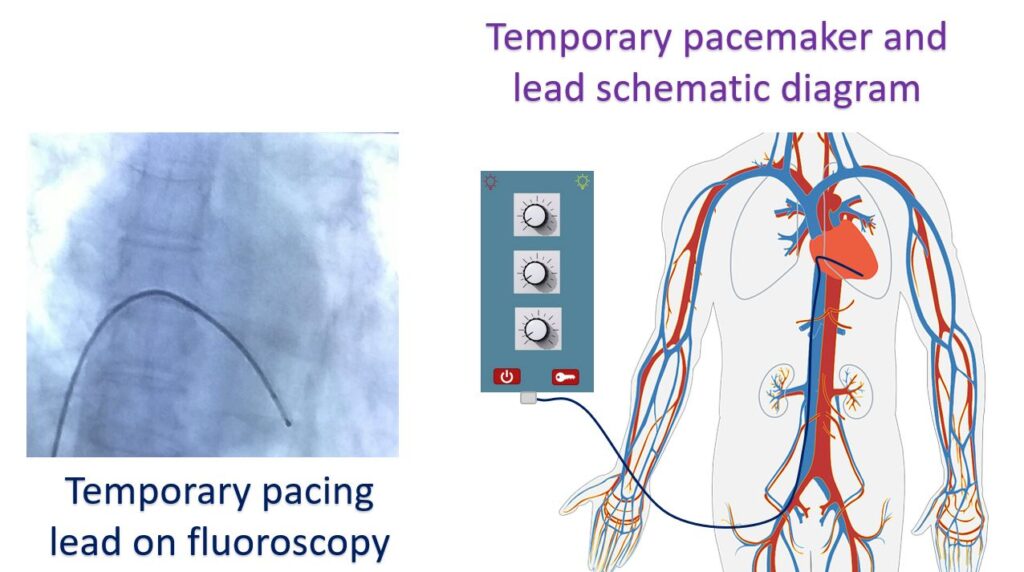
Temporary pacemaker usually has three controls on it to change the pacing rate, sensing sensitivity and pacing electrical output. Sensing is the capacity of the pacemaker to sense the natural signals from the heart if present and wait. If a natural signal is not sensed, the pacemaker gives a pacing electrical signal at the end of the programmed interval. Sensing prevents competition between the natural signals of the heart if any the artificial signals of the pacemaker, which may cause serious heart rhythm abnormalities.
The voltage or current of the output can be controlled by one of the control knobs on the temporary pacemaker. Higher outputs may be needed in some cases when heart muscle is partly damaged or when the blood potassium levels are high. Higher pacing outputs may also be needed if the lead tip is not in good contact with the heart muscle, which can occur when the person is a bit restless due to illness.
Temporary pacing is used as a temporary measure to cover short term decrease in heart rate. When the cause is a permanent disorder, a permanent pacemaker is implanted under the skin and connected to the heart with leads introduced through the blood vessels. Most common reason for temporary pacing would be certain types of heart attack in which the electrical system of the heart is affected. This usual recovers in a few days with temporary pacing support.
Temporary pacing is also done to support certain treatment procedures. It is usual to put a temporary pacemaker to support the heart just before implantation of a permanent pacemaker. Certain procedures which need pacing the heart at a fast rate to reduce movements as while implanting an artificial valve is another reason for temporary pacing. Occasionally pacing at fast rate is also used for overdrive suppression of certain abnormal heart rhythms.
Temporary pacing is usually done in the cardiac catheterization laboratory (cathlab) with X-ray fluoroscopic imaging which allows visualization of the passage of the lead into the heart. In an emergency, it may have to be done at the bedside in the intensive care unit. Special balloon tipped pacing leads which follow the blood stream is useful in such cases. Location of the lead tip can be assessed from the pacing ECG pattern in such cases.
Here is an ECG of a person who has been given temporary pacing:
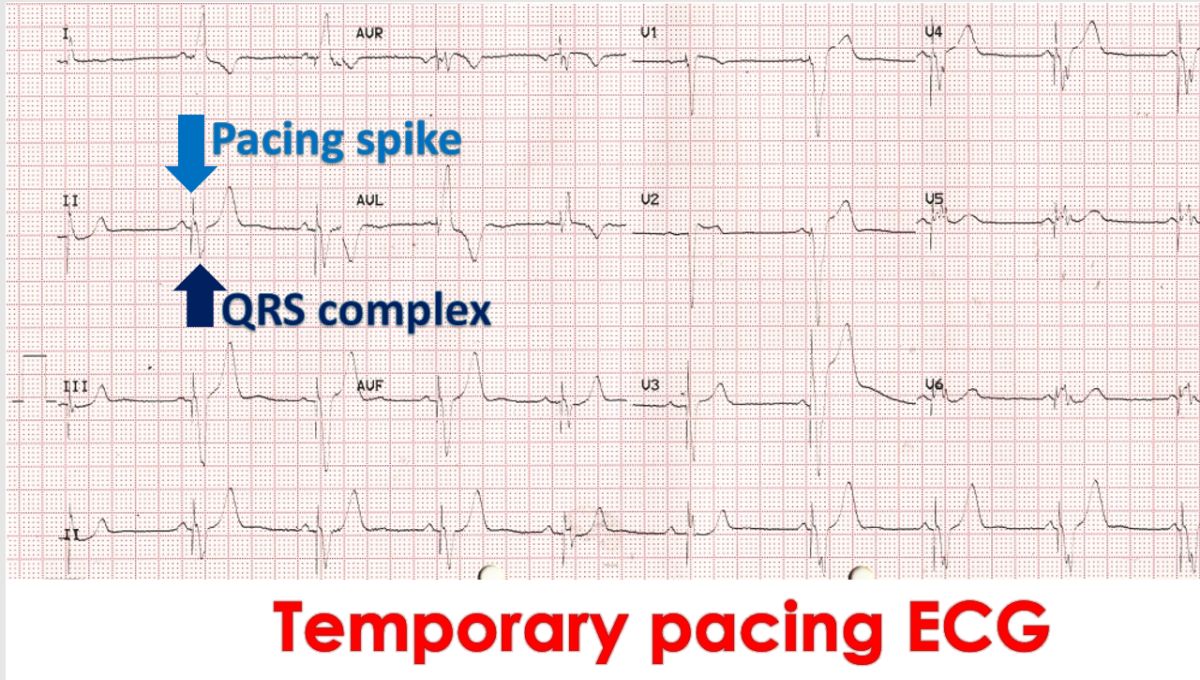
The narrow spikes prior to each QRS complex is the pacing spike, the electrical signal delivered by the pacemaker. QRS complex is the electrical activity of the lower chambers of the heart, which occurs as a result of pacing in this case. This electrical activity causes the heart muscle to contract and pump blood.
While the temporary pacemaker lead is in the heart, the person should avoid too much movement as the wire tip might perforate the right ventricle. This does not apply to permanent pacemaker which uses a softer lead. If the temporary pacing lead has been introduced through the groin, movements of the legs will have to be very cautious, if any.
Usually such persons are monitored in an intensive care unit till either the heart rate recovers or a permanent pacemaker is implanted. Pacing and sensing function of the device has to be checked regularly while in the intensive care unit as the temporary pacing lead may move and result in loss of function. Temporary pacing wire is removed cautiously once the heart rate has recovered or if a permanent pacemaker has been implanted and become functional.
